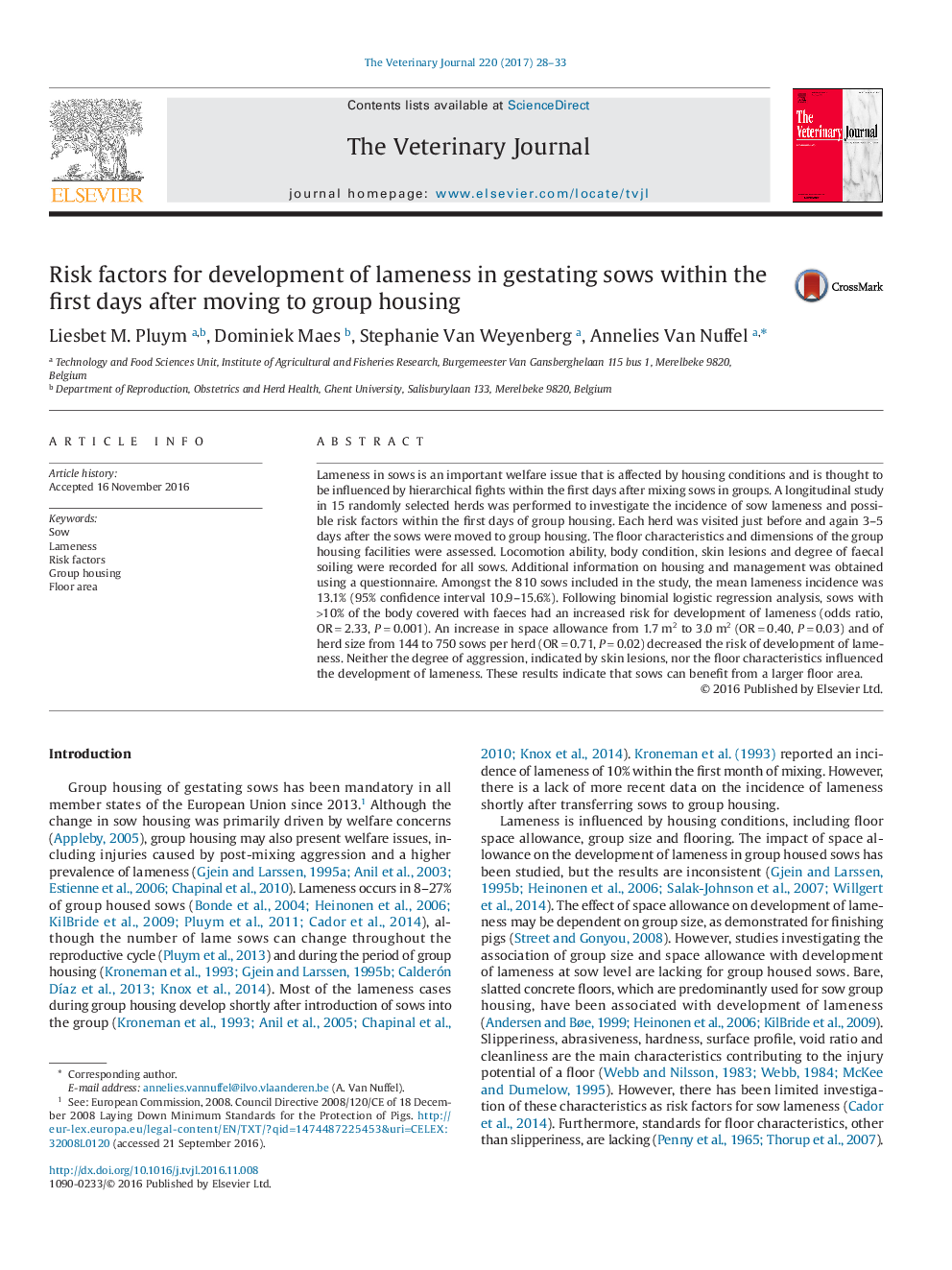| Article ID | Journal | Published Year | Pages | File Type |
|---|---|---|---|---|
| 5544854 | The Veterinary Journal | 2017 | 6 Pages |
Abstract
Lameness in sows is an important welfare issue that is affected by housing conditions and is thought to be influenced by hierarchical fights within the first days after mixing sows in groups. A longitudinal study in 15 randomly selected herds was performed to investigate the incidence of sow lameness and possible risk factors within the first days of group housing. Each herd was visited just before and again 3-5 days after the sows were moved to group housing. The floor characteristics and dimensions of the group housing facilities were assessed. Locomotion ability, body condition, skin lesions and degree of faecal soiling were recorded for all sows. Additional information on housing and management was obtained using a questionnaire. Amongst the 810 sows included in the study, the mean lameness incidence was 13.1% (95% confidence interval 10.9-15.6%). Following binomial logistic regression analysis, sows with >10% of the body covered with faeces had an increased risk for development of lameness (odds ratio, ORâ=â2.33, Pâ=â0.001). An increase in space allowance from 1.7âm2 to 3.0âm2 (ORâ=â0.40, Pâ=â0.03) and of herd size from 144 to 750 sows per herd (ORâ=â0.71, Pâ=â0.02) decreased the risk of development of lameness. Neither the degree of aggression, indicated by skin lesions, nor the floor characteristics influenced the development of lameness. These results indicate that sows can benefit from a larger floor area.
Keywords
Related Topics
Life Sciences
Agricultural and Biological Sciences
Animal Science and Zoology
Authors
Liesbet M. Pluym, Dominiek Maes, Stephanie Van Weyenberg, Annelies Van Nuffel,
